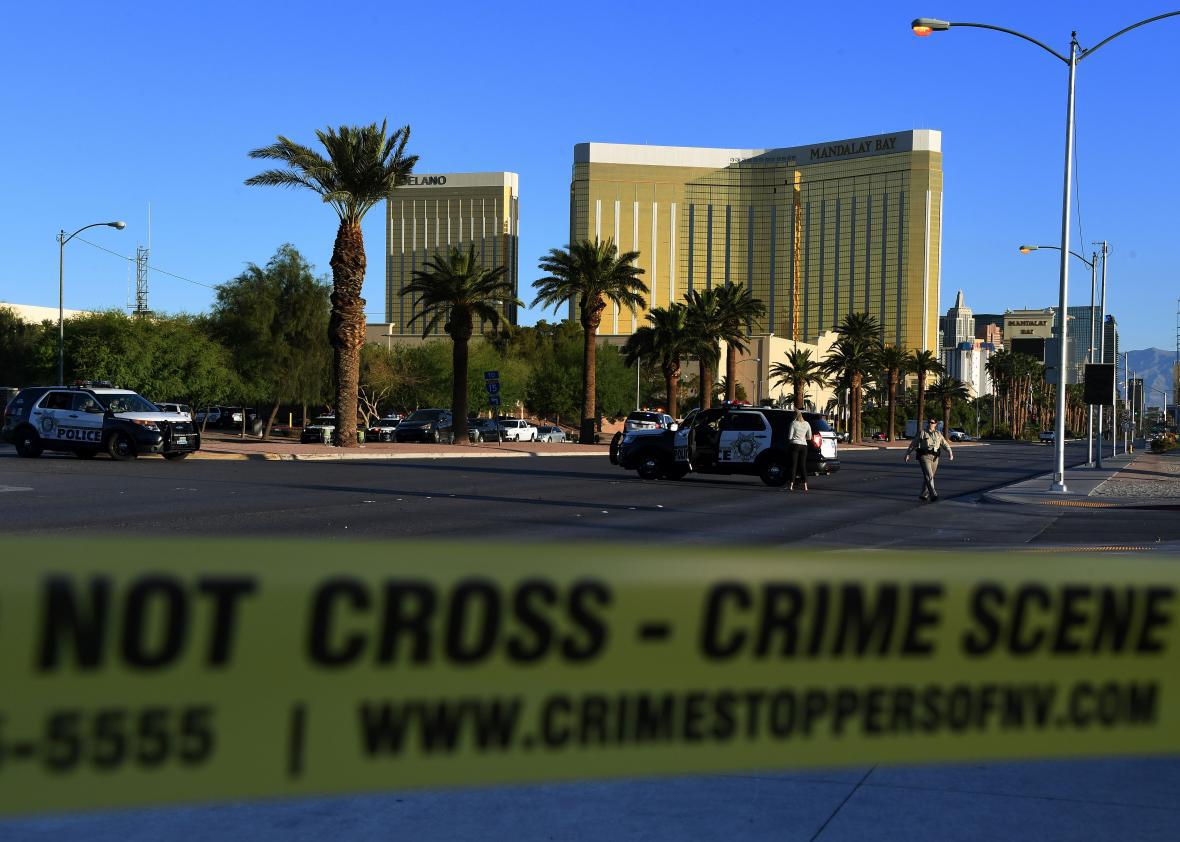We still don’t know anything about the motivations of Stephen Paddock, the 64-year-old Nevada resident identified by authorities as the perpetrator of the deadliest mass shooting in U.S. history. But there’s already a false dichotomy emerging in the question of whether Paddock, who shot and killed more than 50 people and injured hundreds more in Las Vegas on Sunday night, was a “terrorist”—i.e., someone acting for political or ideological reasons—or simply a mentally disturbed person. For instance:
The two are not mutually exclusive. It is generally true that studies of a wide variety of terrorist groups of different ideologies show that their members are no more psychologically unstable than the population at large. But the same is not true of “lone wolf” attackers, which is what Paddock appears to have been.
A 2013 study of violence committed by far-right extremists in the United States published in the journal Criminology and Public Policy, found that 40 percent of loner attackers—those who acted out of some political motivation but had no ties to established extremist organizations—had a reported history of mental illness. A study published by the American Psychological Association in 2014 found the lone-actor terrorists of a variety of ideologies were 13.49 times more likely to have mental illness than group actors. And an article published last year by the University of Maryland’s National Consortium for the Study of Terrorism and Responses to Terrorism also noted that “the link between mental health and radicalization is not limited to clinically diagnosable disorders.” Often radicalization can be driven by traumas not directly related to the cause the attackers claim to be fighting for:
For example, Colleen LaRose, aka “Jihad Jane,” who was implicated in a plot to assassinate Swedish cartoonist Lars Vilks, suffered various types of physical and mental abuse in her youth, including repeated rape by her own father. Naser Jason Abdo, who conspired to attack an Army base in Fort Hood, Texas, suffered humiliating harassment in the Army and grew up in a broken and abusive family environment, with both parents in and out of his life due to their criminal records. One of the Boston Marathon bombers, Tamerlan Tsarnaev, had a history of conflict-related traumas and domestic abuse, as well as untreated mental problems.
This isn’t to discount the role of radical ideologies in driving violence, and it certainly shouldn’t be used to stigmatize people dealing with trauma or mental health issues. But it’s important to understand that ideology can sometimes be just one of a number of factors motivating an act of terrorism. If someone is distraught it doesn’t mean they’re not also a terrorist.
As many observers have pointed out, certain types of terrorist violence are more likely to be waved away as acts of insanity than others. One example: Anders Breivik, the right-wing extremist who killed 77 people in Norway in 2011, left behind a detailed and heavily researched manifesto explaining his racist, ultranationalist views and selected explicitly political targets. Yet, novelist Karl Ove Knausgaard, writing about Breivik for the New Yorker in 2015, dismissed his ideology as essentially irrelevant, arguing that his evident narcissism and self-aggrandizing behavior “points away from the political and the ideological and toward the personal” as the best way to understand his actions. Those who act in the name of the caliphate, no matter their unusual behavior or past traumas, tend not to get the same pass.
